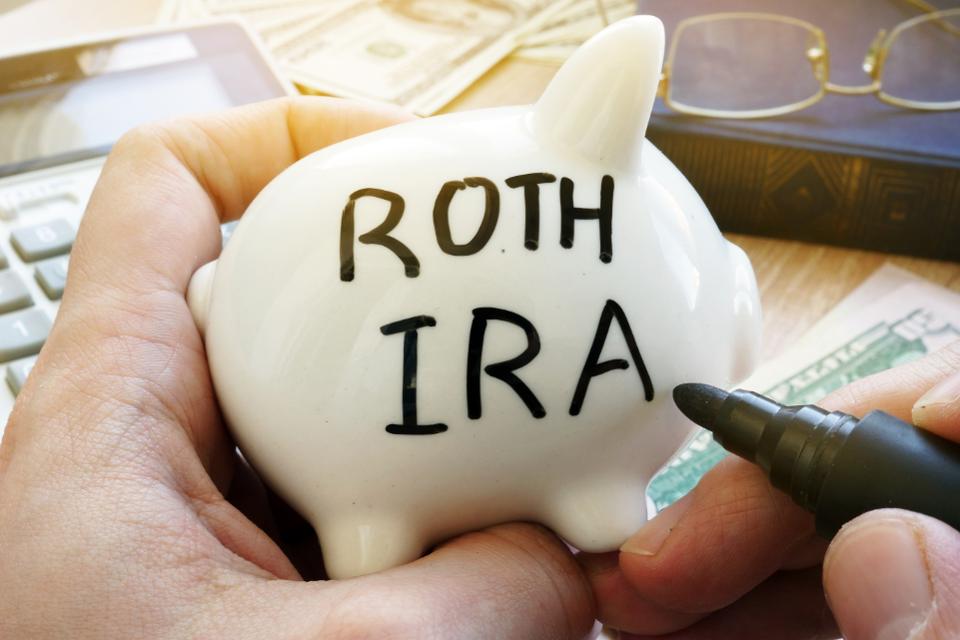How to reduce taxes for your retirement account
How to reduce taxes for your IRA

When you started investing in an IRA or other retirement accounts, you probably be told:
-Money placed in an IRA can be used for tax withholding
-By investing money in an IRA, the value-added portion can be taxed.
-When you reach retirement age and start taking money from your retirement account, your tax rate is lower.
For many taxpayers, these three points are correct. But for some taxpayers, the above three points are not necessarily correct. Over the past few decades, regulations on INVESTMENT in IRAs and retirement accounts have been changed. Here are a few examples.
The IRA began in 1974, when President Ford signed the Employee Retirement Income Security Act. The purpose of the original IRA legislation was to give employees who did not receive the company's retirement benefits, an opportunity to save their own retirement benefits, and to enable those with corporate retirement benefits to "roll over" their retirement funds into their IRA accounts when they retire. Congress has amended the IRA several times since it was introduced in 1974. In 1978, Congress added an employer-backed IRA, called the SEP Employee Pension, to encourage employers to support their retirement savings and that of their employees. Between 1982 and 1986, Congress pushed for a general deduction for IRA, which would have made it to anyone under the age of 70 and a half who, if they had an employer's other retirement plan, were able to do so.
In 1987, Congress repealed the IRA's universal deduction. If an employee already has an employer's alternative retirement plan, the eligibility to invest in an IRA is limited to those who earn less than a certain threshold. In 1996, Congress introduced the SIMPLE IRA. In 1997, Congress introduced the Roth IRA, as well as the conversion from a traditional IRA account to a Roth IRA account.
The most recent was in 2001, when Congress raised restrictions on contributions to IRAs and other retirement accounts. (Source for all of the above: The Investment Company Institute has undergone a brief history of the evolution of the IRA above, while income taxes have also evolved.) In 1974, the marginal tax band increased from 14% to 70%. In 1982, the marginal tax band increased from 14% to 50%. In 1988, the top tax band fell to 28 per cent, and that lasted until 1991, when the top tax band increased to 31 per cent. In 1993, the highest tax band was 35.3 per cent, the following year (1994) the highest tax band increased to 39.6 per cent, in 2001 the highest tax band was 39.1 per cent, the following year (2002) slightly reduced to 38.6 per cent, and since 2003 the top tax band has remained at 35 per cent. (Source: The Tax Foundation)
I'm going to make that clear: when you put money into an IRA account, and where you withdraw money from an IRA account, it's about whether you're withdrawing money and the income tax bracket is higher than when you're making a deposit. As the tax code continues to change, some taxpayers may overlook some of the strategies they can use to cut taxes on retirement accounts and elsewhere. In fact, there are many tax cuts that many taxpayers could have adopted, but often they and their advisers do not know that they have these tax cuts. The purpose of this report is to share some of these strategies with you. But as you read, keep in mind that not all strategies apply to all taxpayers. You should discuss your individual situation with the appropriate professionals to determine which strategy is best for you.
Strategy One: Deduction Stacking
How good it would be to be able to increase the deduction to offset some of the income! The problem is that many people are able to deduct a limited amount of tax. Many times, these itemized tax deductions add up to a lot less than standard deductions. Here's an example:
In 2006, a single taxpayer over the age of 65 could pay $6,150 for Standard Deduction, even if the taxpayer was actually able to itemized Deductions not so much, which could be deducted from the taxpayer's income without filing a tax return. In addition to this taxpayer they can deduct a $3,300 personal range. Married 65-year-old couples who share their tax returns will be entitled to a standard deduction of $10,300. In addition, they can deduct two $3,300 personal swasath.
While you may already know what expenses can be reported, let‘s make a summary:
Interest paid on the purchase price of the house, to a certain extent
Medical costs, within a certain limit
Taxes you pay (including real estate taxes, sometimes state and municipal taxes, and sales taxes)
Interest on investment
The "Points" of the money payment
Charitable Donations
Accident and theft losses
Other miscellaneous items such as work-related expenses, safe spending, union membership fees, tax filing fees, etc.
Strategy Two: Convert to Roth IRA
A few years ago, Congress invented a new IRA. While Most of what I do to Congress is not flattering, this Roth IRA is a matter for taxpayers. The Roth IRA differs from the traditional IRA in that the money deposited in the Roth IRA is not tax deductible. The second difference is that the value-added portion of a traditional IRA is tax-deductible, while the value-added portion of a Roth IRA is completely tax-free. That is, at retirement, income from a traditional IRA is taxed, while income from roth IRAs is tax-exempt.
Some taxpayers are eligible to convert their traditional IRAs into Roth IRAs, transforming their retirement accounts from tax relief to tax-free. But they must qualify. The cost of the conversion is simple: as long as the tax owed on a traditional IRA account is paid, all future value-added of the new Roth IRA will be completely tax-free, and the income raised in the future will be completely tax-free. (In most cases, the value-added portion of the exemption will not be proposed until five years after the conversion.)










